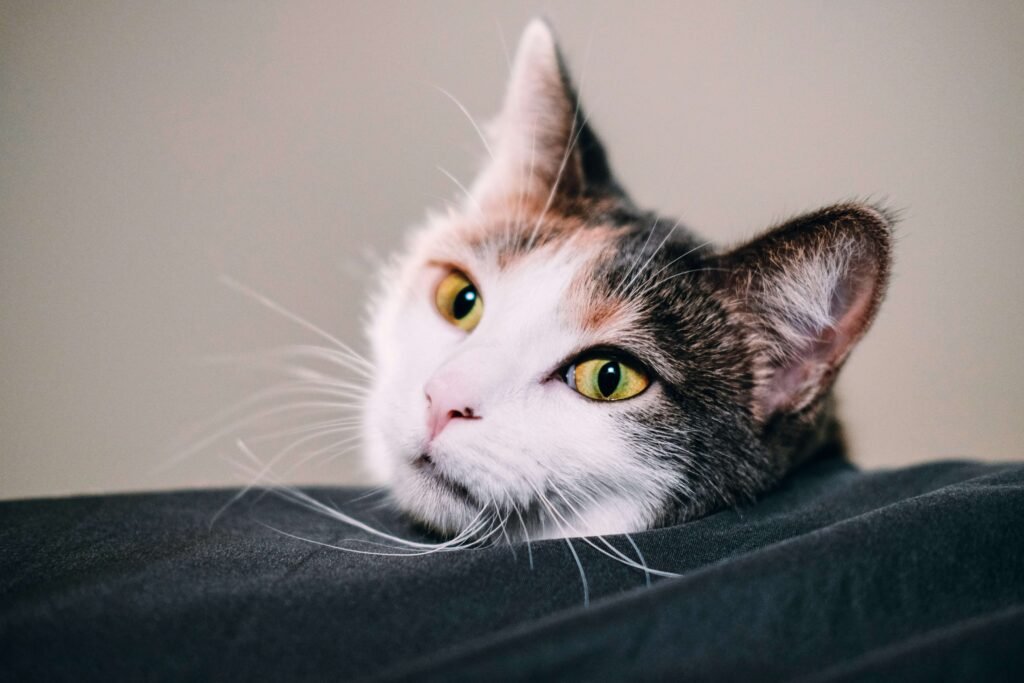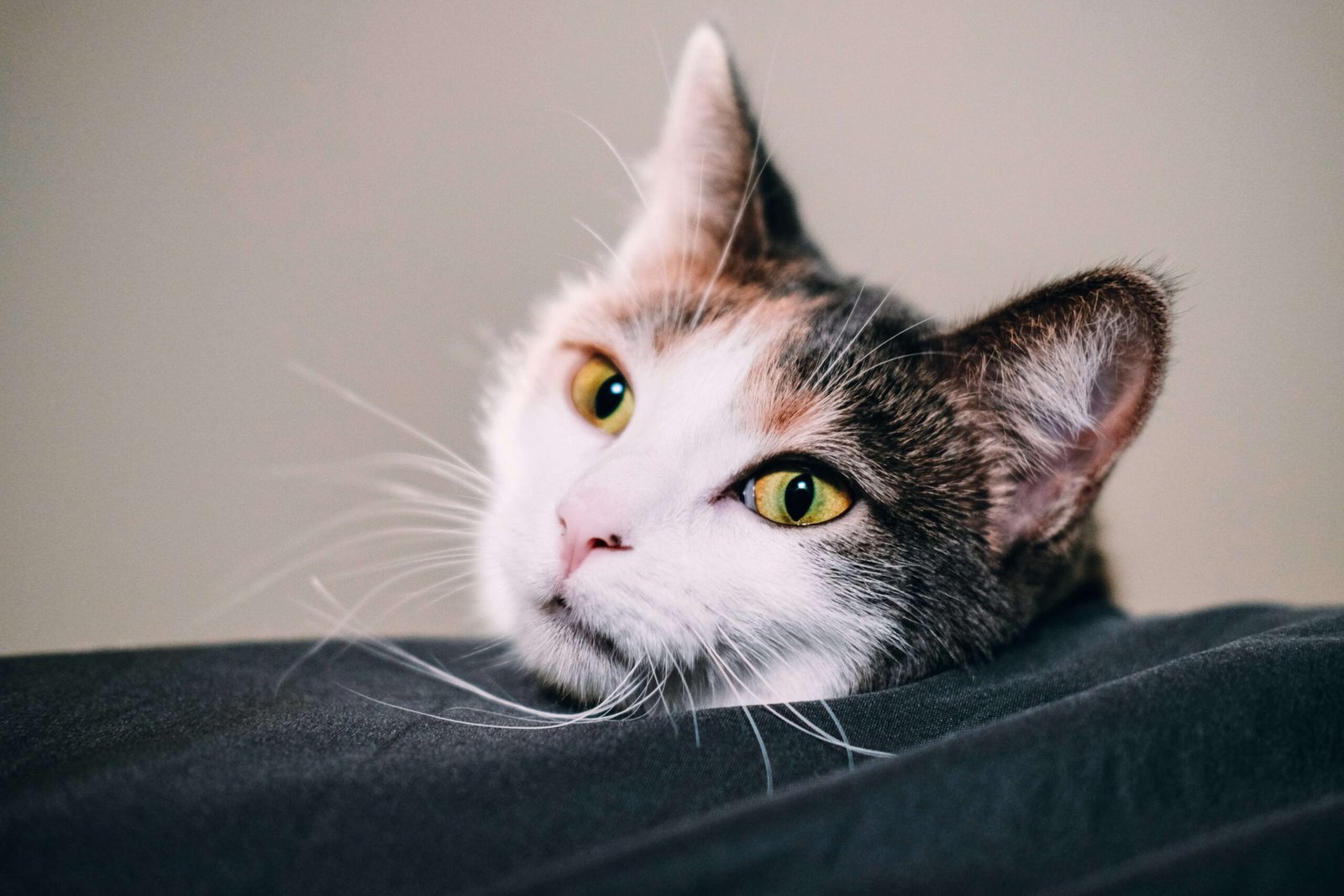Why Is My Cat Not Eating?
A cat refusing to eat can be a worrying sign for any pet owner. While some cats may skip a meal occasionally due to pickiness or stress, prolonged refusal to eat can indicate an underlying health issue or environmental factor. Cats are creatures of habit, and even small changes in their routine, diet, or surroundings can impact their appetite. Understanding why your cat isn’t eating is crucial, as it can affect their overall health and well-being. In this blog post, we’ll explore the potential reasons behind your cat’s loss of appetite, how to address the issue, and when to seek veterinary help.
Common Reasons Why Cats Stop Eating
There are several reasons why a cat might stop eating, ranging from physical ailments to emotional stress. Here are some of the most common causes:
Illness : Conditions like dental disease, gastrointestinal issues, or infections can make eating painful or uncomfortable.
Stress or Anxiety : Changes in the environment, such as moving homes or introducing a new pet, can cause stress-related appetite loss.
Food Preferences : Cats can be finicky eaters, and they may refuse food if it doesn’t meet their taste or texture preferences.
Recent Vaccinations : Some cats experience temporary side effects, including appetite loss, after receiving vaccinations.
Hairballs or Digestive Blockages : Hairballs or foreign objects in the digestive tract can lead to discomfort and reduced appetite.
Identifying the root cause of your cat’s refusal to eat is the first step toward helping them regain their appetite and stay healthy.
Symptoms That Accompany Loss of Appetite
When a cat stops eating, other symptoms often accompany the behavior, providing clues about the underlying issue. Here’s what to watch for:
Lethargy : A lack of energy or interest in activities can indicate illness or discomfort.
Vomiting or Diarrhea : These digestive issues may signal gastrointestinal problems or food intolerance.
Weight Loss : Rapid or noticeable weight loss is a red flag that requires immediate attention.
Dehydration : Refusing food often leads to reduced water intake, which can result in dehydration.
Behavioral Changes : Hiding, aggression, or excessive vocalization may suggest pain or stress.
Monitoring these symptoms can help you determine whether your cat’s loss of appetite is a minor issue or something more serious.
Check this guide 👉Why Cats Love to Lay Down: Best 7 Expert Tips!
Check this guide 👉Why Does My Cat Bunny Kick Me? Best 7 Expert Tips!
Check this guide 👉Why Does My Cat Meow at Night? Best 7 Expert Tips!

Ways to Encourage Your Cat to Eat | Signs It’s Time to See a Vet |
|---|---|
Offer wet food or broth-soaked kibble | Persistent refusal to eat for 24-48 hours |
Warm the food slightly to enhance aroma | Vomiting or diarrhea lasting more than a day |
Provide a quiet, stress-free eating area | Noticeable weight loss or dehydration |
Stick to a consistent feeding schedule | Lethargy or unusual hiding behavior |
Try different textures or flavors of food | Difficulty breathing or signs of pain |
Tips to Encourage Your Cat to Eat Again
If your cat has stopped eating, there are several strategies you can try to entice them back to their food bowl. Here are some practical tips:
Offer Wet Food : Wet food is often more appealing to cats due to its strong aroma and higher moisture content.
Create a Stress-Free Environment : Ensure your cat’s eating area is quiet, clean, and free from disturbances.
Stick to Routine : Feed your cat at the same time and place every day to establish a sense of security.
Experiment with Flavors : Try different protein sources, such as chicken, fish, or turkey, to find what your cat prefers.
Add Toppers : Enhance the flavor of their food with safe toppings like a sprinkle of tuna juice or bone broth.
By making these adjustments, you can create a more appealing dining experience for your cat and encourage them to eat again.
When to Seek Veterinary Help
While some cases of appetite loss are temporary, others require prompt veterinary attention. Here are signs that it’s time to consult a vet:
Prolonged Refusal to Eat : If your cat hasn’t eaten for 24-48 hours, it’s time to seek professional advice.
Severe Weight Loss : Significant weight loss can lead to serious health complications, such as hepatic lipidosis.
Difficulty Swallowing : Drooling, gagging, or pawing at the mouth may indicate dental or throat issues.
Lethargy and Weakness : Extreme fatigue or inability to move can signal a critical health problem.
Jaundice or Pale Gums : These symptoms may point to liver or kidney issues requiring immediate care.
Early intervention can prevent minor issues from escalating into life-threatening conditions, so don’t hesitate to reach out to your vet.
How to Identify Stress in Cats
Stress is a common cause of appetite loss in cats, and recognizing the signs early can help you address the issue promptly. Here’s how to identify if your cat is stressed:
Hiding Behavior : Cats often retreat to secluded areas when they feel anxious or overwhelmed.
Excessive Grooming : Over-grooming can be a sign of stress and may lead to bald patches or skin irritation.
Changes in Litter Box Habits : Avoiding the litter box or urinating outside it can indicate stress or anxiety.
Aggression : Sudden aggression toward people or other pets may signal discomfort or fear.
Vocalization : Increased meowing, hissing, or growling can be a cry for attention or a sign of distress.
By identifying these stress signals, you can take steps to create a calmer environment and help your cat feel more secure.
Safe Foods to Tempt a Fussy Cat
If your cat is refusing their regular food, trying alternative safe foods can sometimes entice them to eat. Here are some options to consider:
Cooked Chicken : Plain, unseasoned chicken is a high-protein option that most cats find appealing.
Tuna in Water : A small amount of tuna (not in oil) can stimulate your cat’s appetite due to its strong smell.
Pumpkin Puree : Plain pumpkin puree can aid digestion and encourage eating in cats with mild stomach upset.
Bone Broth : Low-sodium, unseasoned bone broth is hydrating and flavorful, making it an excellent appetite booster.
Baby Food : Meat-based baby food (without onion or garlic) is soft, palatable, and easy to digest.
These foods can serve as temporary solutions to entice your cat to eat, but always reintroduce their regular diet gradually once their appetite returns.
Long-Term Strategies to Prevent Appetite Loss
Preventing future episodes of appetite loss involves addressing potential triggers and creating a supportive environment. Here are some long-term strategies:
Maintain a Consistent Routine : Stick to regular feeding times and locations to provide stability for your cat.
Provide Mental Stimulation : Interactive toys, scratching posts, and playtime can reduce boredom and stress.
Regular Vet Checkups : Schedule routine visits to catch and address health issues before they escalate.
Monitor Environmental Changes : Introduce new pets, furniture, or routines gradually to minimize stress.
Keep Fresh Water Available : Ensure your cat always has access to clean water to prevent dehydration and encourage eating.
By implementing these strategies, you can create a stable and enriching environment that promotes your cat’s overall health and well-being.
Frequently Asked Questions About Cats Not Eating
How long can a cat go without eating?
Cats should not go more than 24-48 hours without food, as prolonged fasting can lead to hepatic lipidosis.
Why is my cat suddenly a picky eater?
Sudden pickiness can stem from stress, illness, or changes in food quality or routine.
Can I force-feed my cat?
Force-feeding is not recommended, as it can cause stress or injury. Consult your vet for alternatives.
What should I do if my cat refuses dry food?
Try switching to wet food or adding moisture to their dry food to make it more appealing.
Are hairballs causing my cat’s loss of appetite?
Hairballs can cause temporary discomfort, but persistent refusal to eat may indicate a deeper issue.
Supporting Your Cat Through Loss of Appetite
A cat not eating is a situation that demands attention, as it can quickly escalate into a serious health concern. By understanding the potential causes, recognizing accompanying symptoms, and taking proactive steps to encourage eating, you can help your feline friend regain their appetite and vitality. Remember, patience and observation are key—your cat relies on you to notice changes and act promptly. If the issue persists or worsens, don’t hesitate to seek veterinary care. With love, care, and timely intervention, you can ensure your cat stays happy, healthy, and nourished for years to come.
Can a Cat Die from a Cold? Best 7 Expert Tips! Learn how to identify, treat, and prevent feline colds while understanding when to seek veterinary care for your cat’s health.
Cat Screaming for Food: Best 7 Expert Tips! Discover effective strategies to manage your cat's food-related vocalizations and create a peaceful feeding routine.
Aspiration Pneumonia in Cats: Best 7 Expert Tips! Discover causes, symptoms, and treatment advice to protect your cat’s respiratory health and ensure a speedy recovery.
Hip Dysplasia in Cats: Best 7 Expert Tips! Discover expert advice on managing hip dysplasia in cats, from symptoms and prevention to treatment options for a happier, healthier feline life.





